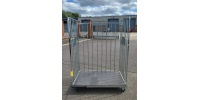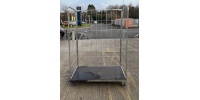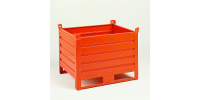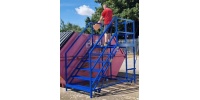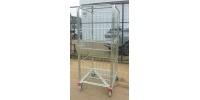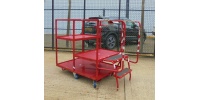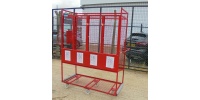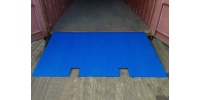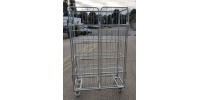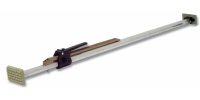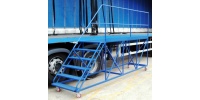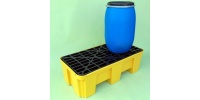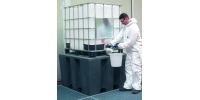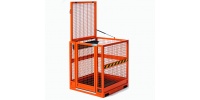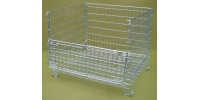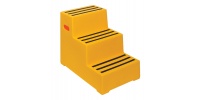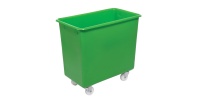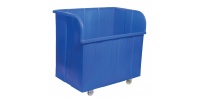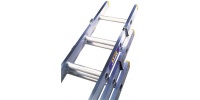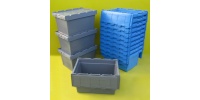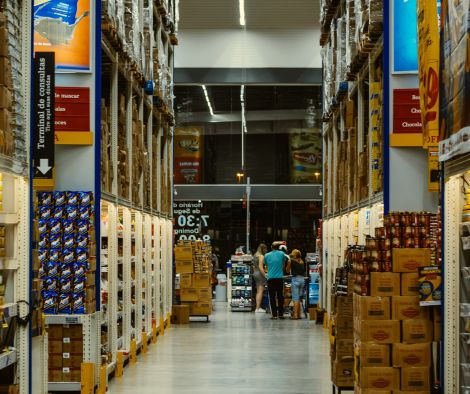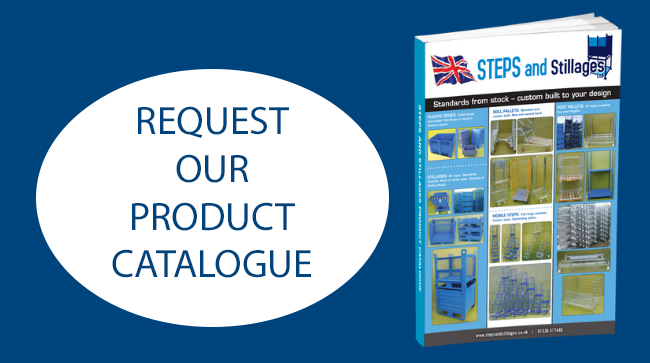Pallets and stillages are both similar portable platforms that essentially provide the same function. In fact, stillage is simply a generic term for a heavy-duty steel-framed pallet variety - making the two part of the same family. Despite their similarity in use, however, there are still significant distinctions between the two. Here, we break down the pros and cons of stillages and pallets.
Pallets
A pallet is a flat portable platform that's designed for ease of use with a forklift. Made from a wide range of materials, including wood, plastic, and steel, they are identifiable by their slatted base and lack of sides. They can have any number of legs, depending on the manufacturer, to make them stackable. Some varieties, like post pallets, have four posts or beams to help secure contents.
Pallets are valuable for the semi-permanent storage in warehouses of items of all shapes and sizes. Although cheap and effective, pallets do skimp on safety and security. They are also less effective at prolonged transport or off-ground storage as they lack sides. They can deal with more uniquely shaped items, however, thanks to this lack of side restriction. This makes them versatile and adaptable.
In general, pallets are not able to bear as much weight as stillages but are an industry-standard form of transport and storage. Often, palleted goods must be wrapped in plastic film for storage or transportation, a practice that is increasingly frowned upon for sustainability reasons. The cheap wood used to make pallets, moreover, is often imported from unsustainable sources outside the EU and may be treated with environmentally harmful chemicals. Even worse, pallets are often deployed as single-use items, after which they are burned or sent to landfill – making them an expensive waste of resources.
Stillages
Stillages are among the top solutions for storage and transport. Shaped just as a pallet, stillages include walls on each side for security and extra loading capacity. The stillage walls can be constructed from steel sheets or meshing. Many feature easy-access drop-fronts for access during storage. Stillages are often designed to be stackable and are effective at managing and organising warehouse floor space.
Further customisation of wheels and finishes can greatly improve warehouse use.
Just like pallets, stillages are designed for transport via folk lift. As the sides prevent contents from moving around, they’re generally safer and more secure. What’s more, stillages can be adapted to a wide number of industries. The drinks industry, for instance, benefits from drum stillages with built-in racks to secure kegs. While typically less compact than standard wooden pallets, folding stillages fill this market gap admirably.
Which Solution Is Best?
Steel stillages are among the most convenient storage and transport solutions on the market. Although they cost more up front than pallets, they are better engineered, so can be reused many times and provide a far lower cost of ownership. Stillages also give much more versatility over simple pallets when it comes to moving and storing goods. Typical pallets are often limited in size and are unsuited for the transport of certain items.
By contrast, stillages can be designed to fit just about any use with perfectly designed custom dimensions. What’s more, they can separate products with meshes and castors for added security. This makes stillages more useful in the transportation of loose goods. Finally, they are more cost-effective and durable thanks to their steel construction, lasting many years.
Next Steps
At Steps & Stillages, we supply a wide range of strong and reusable stillages for all warehouse and logistics applications, providing greater value and a better sustainability profile than wooden pallets. You can pick from a wide selection of stillages by clicking here.
Image Source: Unsplash

